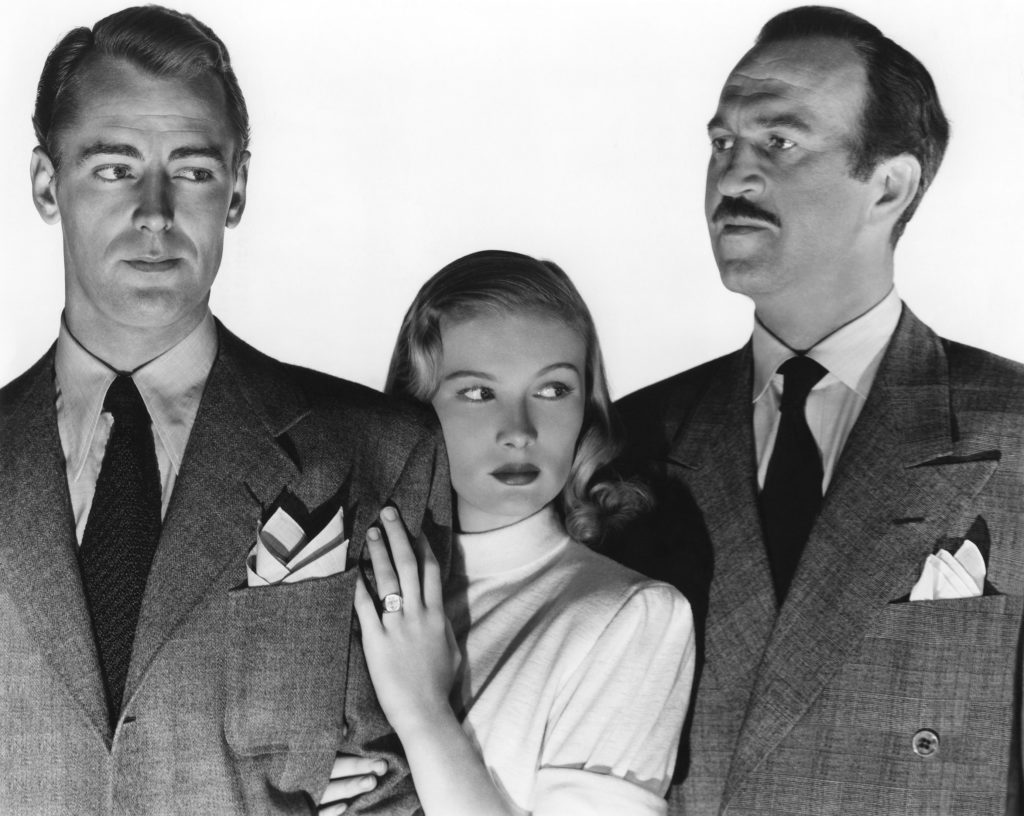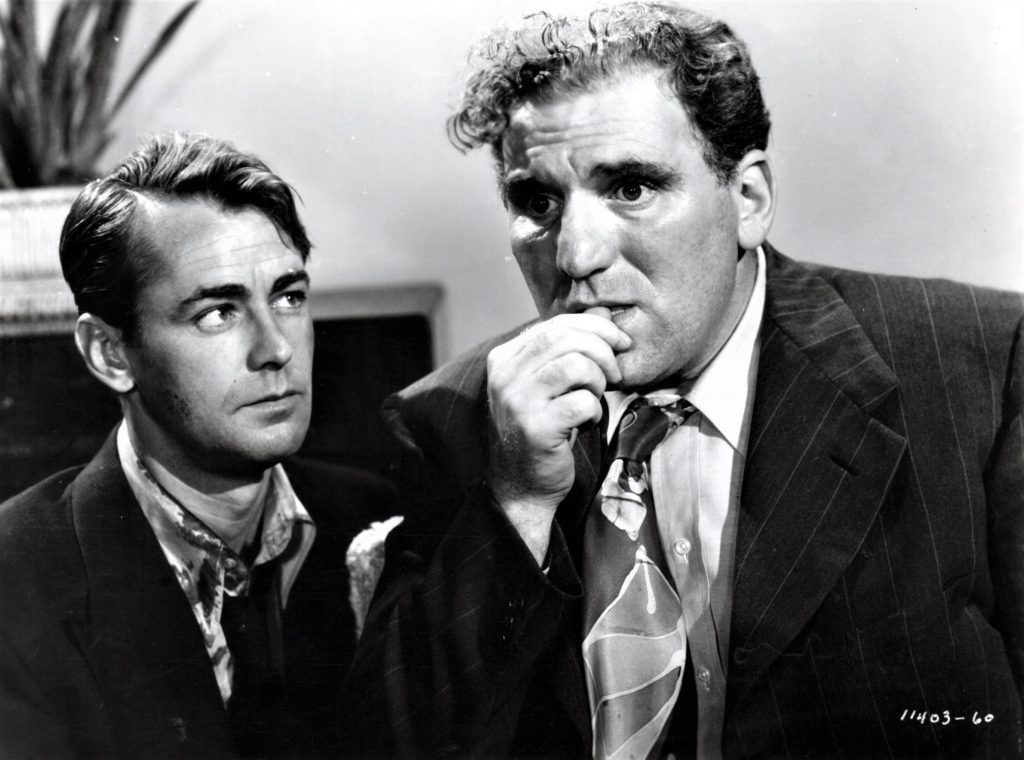I wrote this introduction for The Mesilla Valley Film Society’s screening of The Blue Dahlia in June, 2023.
Like a lot of noirs released around this time, 1946’s The Blue Dahlia tells the story of an ex-military man who’s in over his head, complete with a femme fatale, a false accusation of murder, and even lots of rain. However, thanks to its excellent cast, enabled by journeyman director George Marshall’s crackerjack direction and Raymond Chandler’s nuanced screenplay, it’s a cut above the rest, even if the author himself disowned the final work after two rounds of studio tinkering, the first of which came at the behest of the Navy.

This was Chandler’s first original screenplay, picked up as an option by John Houseman when it was a novel in progress. He cranked out the first half of the screenplay in just six weeks and Paramount started production with just that much of the movie written in March of 1945 thanks to Alan Ladd’s upcoming re-induction into the US Army.
Four weeks into filming, they had shot sixty-two pages; Chandler had handed in another twenty-two. There were still roughly thirty needed, but the recently-sober author was claiming that he had writer’s block after being told by the studio that the Navy had vetoed his original choice of murderer.
Paramount offered him another $5,000 to push through, but he felt that it was a bribe that besmirched his honor. Chandler announced that he could finish the script if he could start drinking again, while working from home — something that was unheard of at the time. Producer Houseman claimed that the writer’s requirements also included the use of two limousines, six secretaries, and a direct line open to the office.
The good news was that the drunk who hated bribes but loved luxury finished the script six days early. The bad news was that his choice of killer after the Navy’s feedback seemed arbitrary and almost random, the kind of thing that Chandler himself claimed to hate. Marshall and Houseman came to the writer and asked for a new ending and got one that Chandler despised, but that is immensely more satisfying than what he’d handed in.

Chandler’s antics come off as ironic now, especially when you watch this movie. Alcohol abuse is treated seriously, as is the PTSD that’s suffered by William Bendix’s character Buzz. Marshall and Houseman left about 90% of the screenplay as-is and it shows; Chandler’s unique rhythms, dialogue, and character work are apparent throughout, even the parts he disowned.
As usual, I’ll offer up some trivia before we start:
- Veronica Lake wasn’t just cast in this movie because of her work with Alan Ladd in This Gun For Hire; the petite star (she was just 4’11” and weighed 90 pounds) made the 5’8″ Ladd look like Burt Lancaster in comparison.
- Speaking of Lake: Chandler hated her, calling her “Moronica Lake,” and telling a friend, “The only times she’s good is when she keeps her mouth shut and looks mysterious.”
- I’m beginning to suspect that he was kind of an unpleasant person to work with.
- I mentioned that George Marshall was a workhouse – he has 188 directorial credits on IMDB, the vast majority of which were full-length theatrical films. There’s a lot of disposable studio fluff in his filmography along with some gems like the Bob Hope comedy The Ghost Breakers and How The West Was Won, but besides tonight’s picture, I feel that his best movie is easily the Jimmy Stewart / Marlene Dietrich western comedy Destry Rides Again.
- In the end, Alan Ladd wasn’t forced to re-enlist. By the time he was to report for duty, the Government had ruled that all men over aged 30 would be released from their draft obligations.
Next month, we’re going to be screening Akira Kurosawa’s epic adaptation of an Ed McBain novel, High and Low. I look forward to seeing everyone then!
Leave a Reply